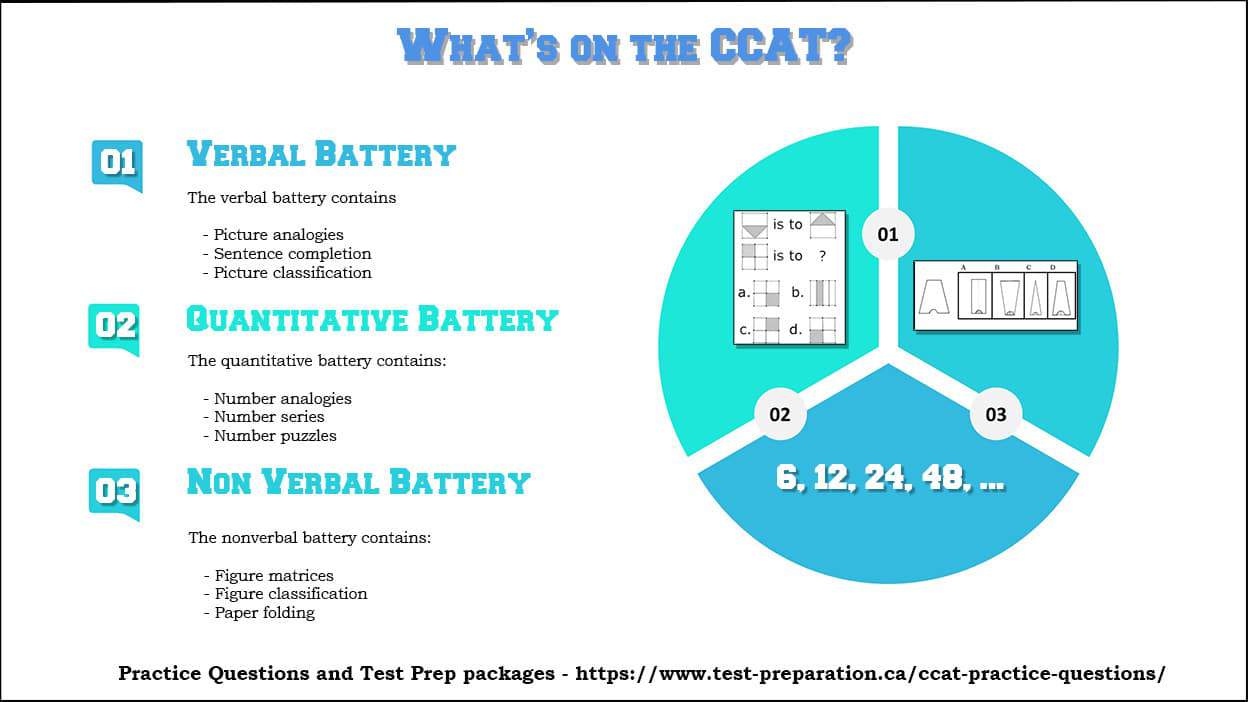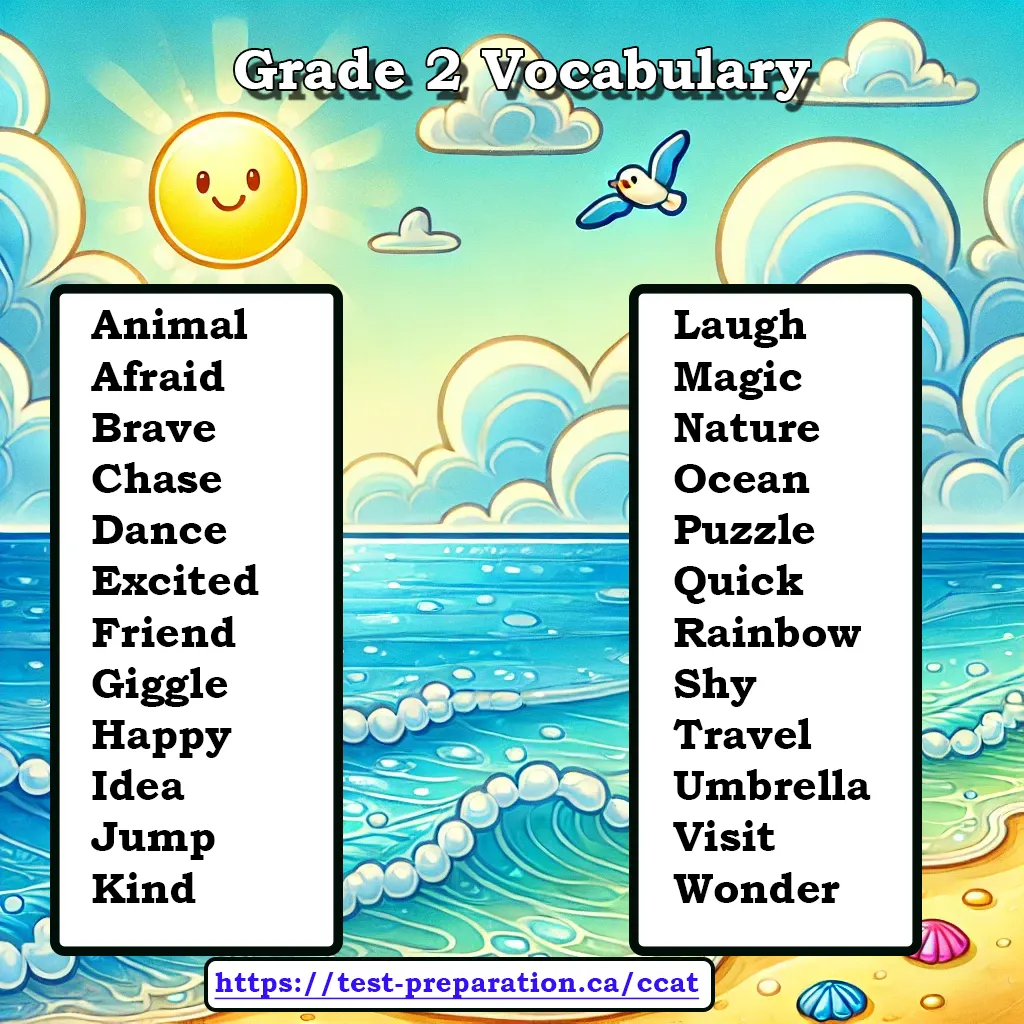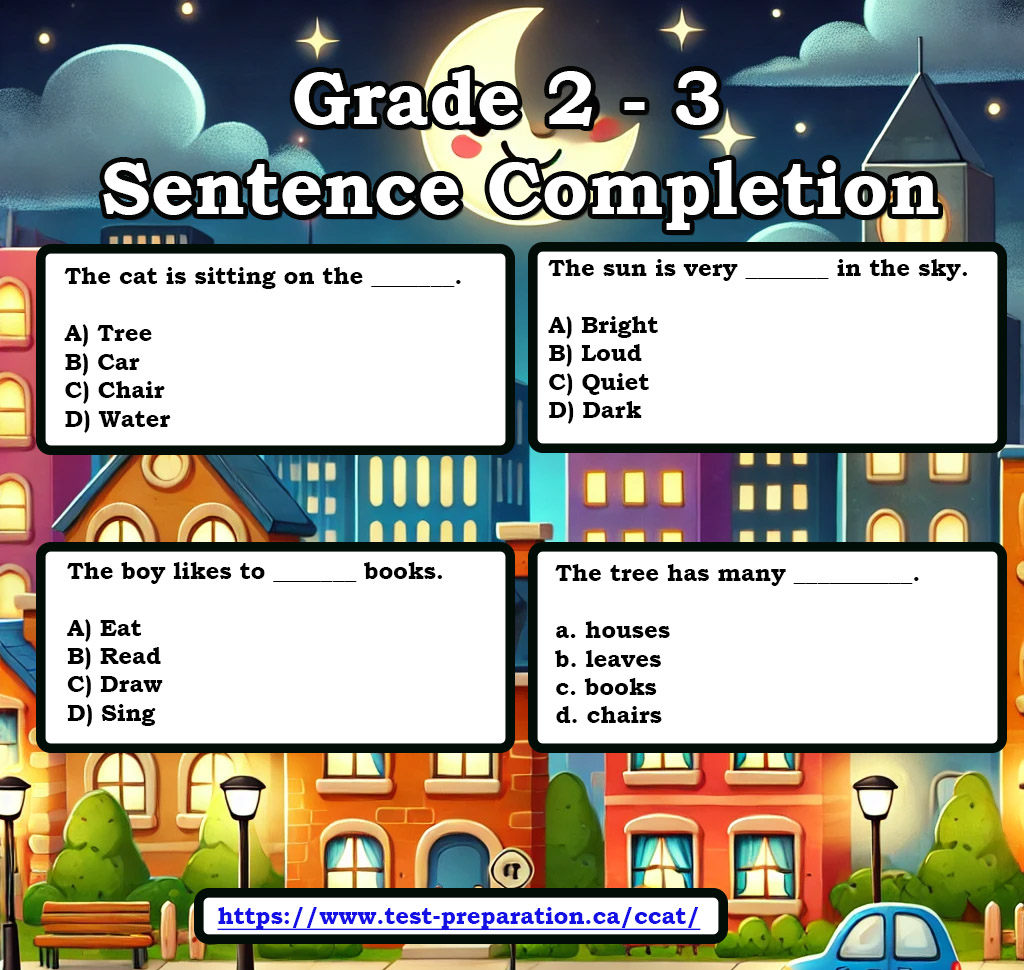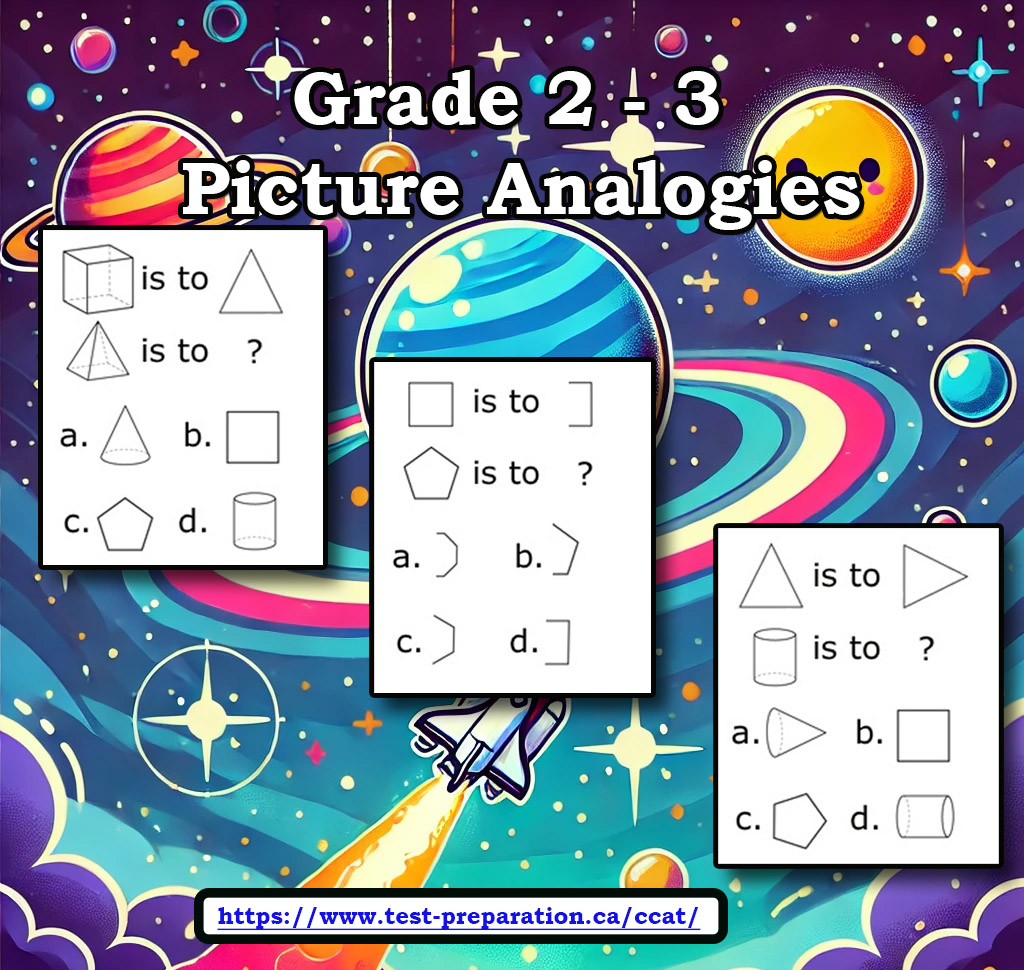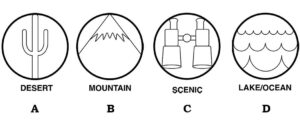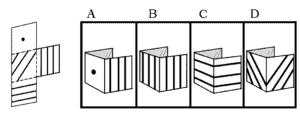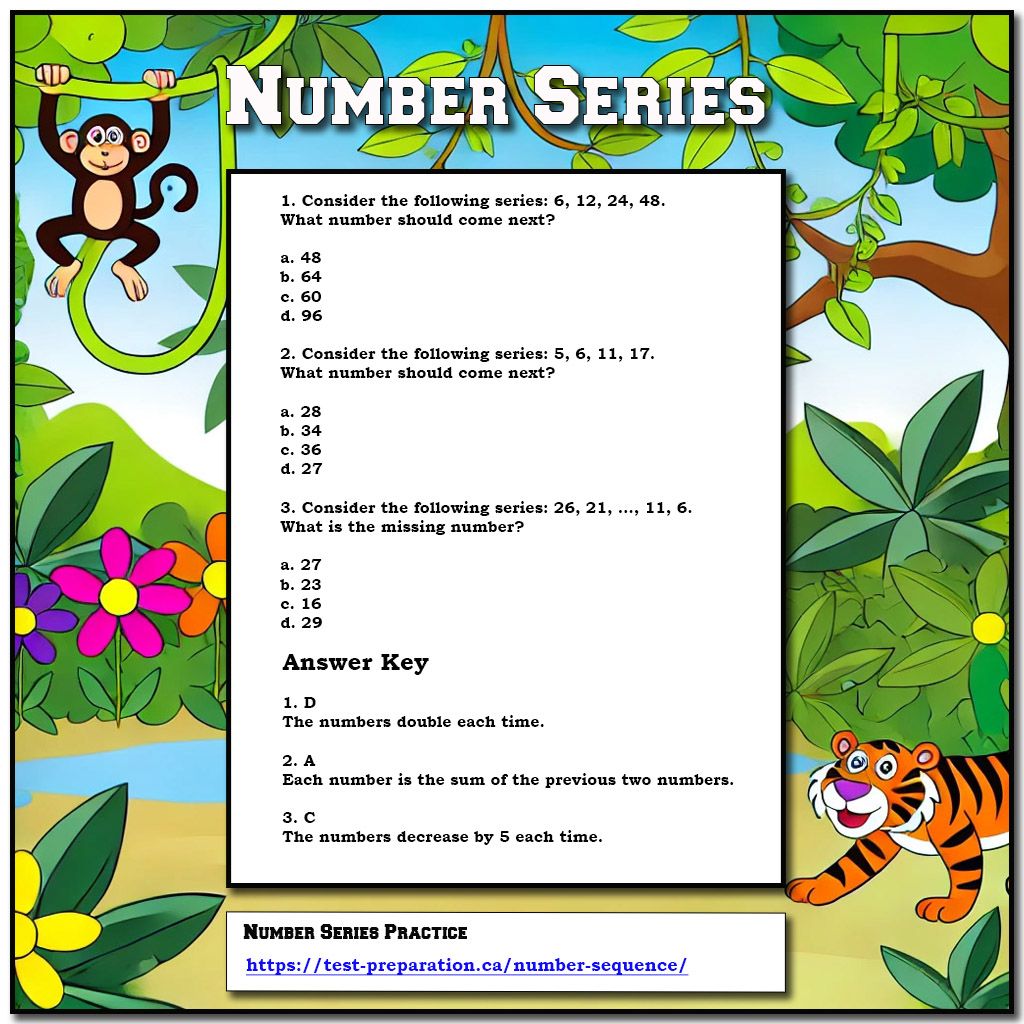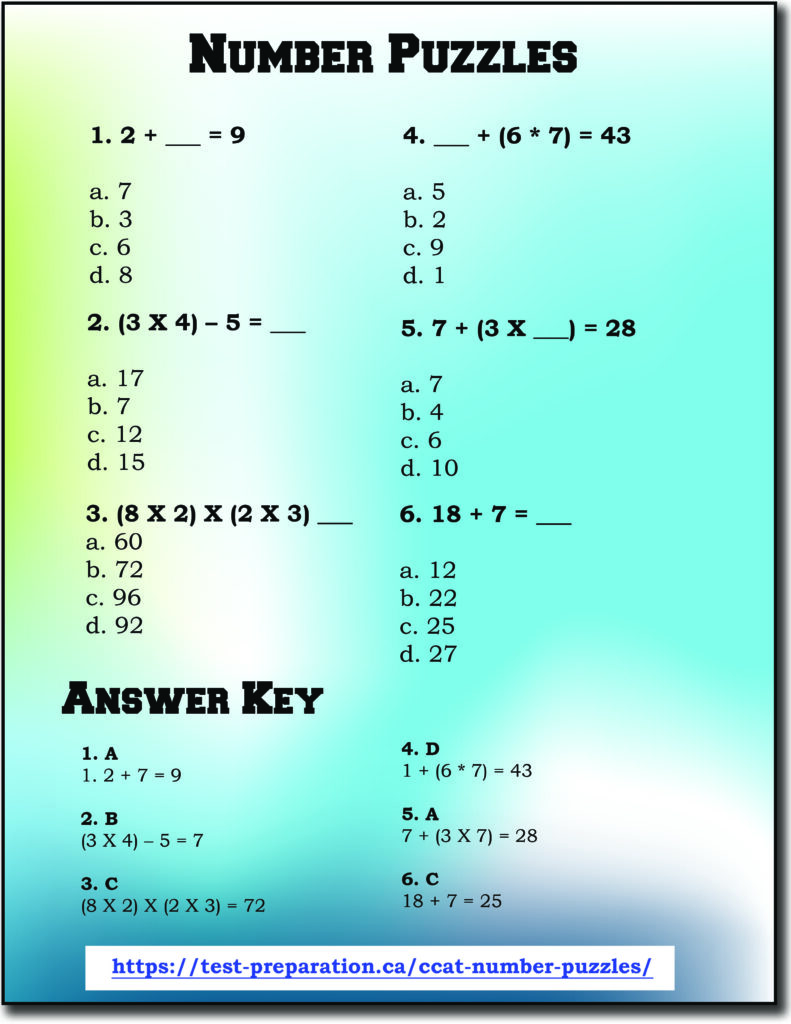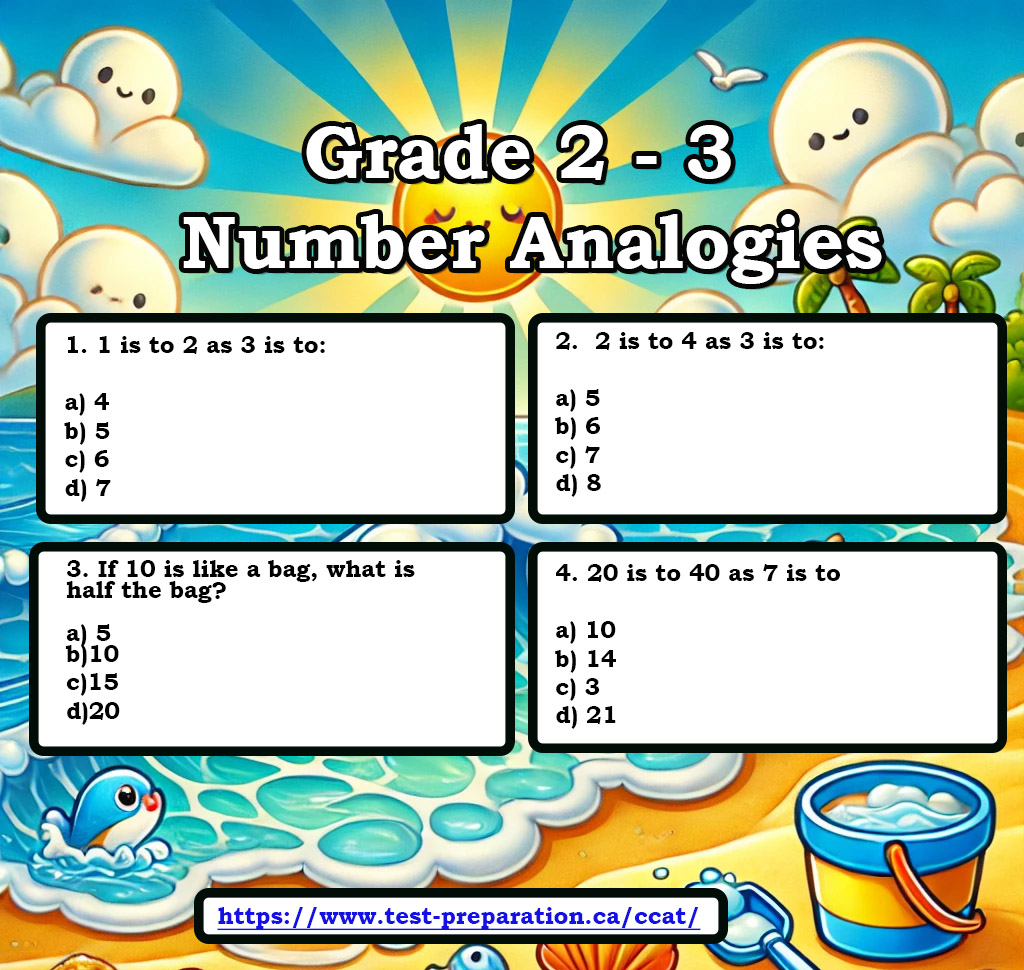About the CCAT Grade 2 Test
The Canadian Cognitive Abilities Test Grade 2 (also called Level 8) is used to test the learning aptitude of children in grade 2 or 8 years old. Candidate’s results are compared with children their age at the same school and to children from different districts.
Candidate are asked questions that relate to quantitative, nonverbal, and verbal skills. The quantitative and nonverbal sections of the test ensure the test is fair to students who are relatively weak in their use of language. However, you should be aware that questions in the CCAT Level 8 may seem unfamiliar to students making practice before the test very important. The test measures a child’s learning aptitude is measured best by questions on unfamiliar topics.
CCAT Level 8 Grade Test sections
Candidates of the CCAT level 8 test sit for 154 questions divided into 3 sections, verbal battery, quantitative battery, and nonverbal battery. The school a candidate goes to will determine whether the test will be taken in sections, or all the sections together. The test is taken in a group setting. The three main sections are further divided into three subsections. The subsections are designed to conduct a detailed analysis of the candidate’s abilities in the specified areas.
Click here for CCAT Grade 2 Practice and Test Prep
CCAT Grade 2 Online Course — CCAT Grade 2 PDF Version — CCAT Grade 2 Paperback (Amazon)
Verbal Battery
The verbal section of the Canadian Cognitive Abilities Test (CCAT) evaluates a student’s language-based reasoning and comprehension. Questions includes vocabulary, verbal analogies, sentence completion, and comprehension questions. Students are asked to demonstrate their understanding of word meanings, relationships between words, and the ability to follow and interpret written instructions or passages. The verbal section aims to measure a student’s linguistic aptitude, including their ability to process and understand language, which is crucial for academic success across various subjects.
Vocabulary
The vocabulary section of the CCAT Grade 2 evaluates a student’s language-based reasoning and comprehension skills.
CCAT Vocabulary Practice –
Grades 2 & 3
Sentence Completion
The examiner or proctor will read out a sentence with one missing word. Candidates must listen to determine what the sentence is trying to communicate, then select the best answer from the options given.
Example Questions
Verbal Analogies
The verbal analogies section of the CCAT Grade 2 test evaluates a child’s ability to identify relationships and concepts between pairs of words and their ability to apply relationships to other pairs.
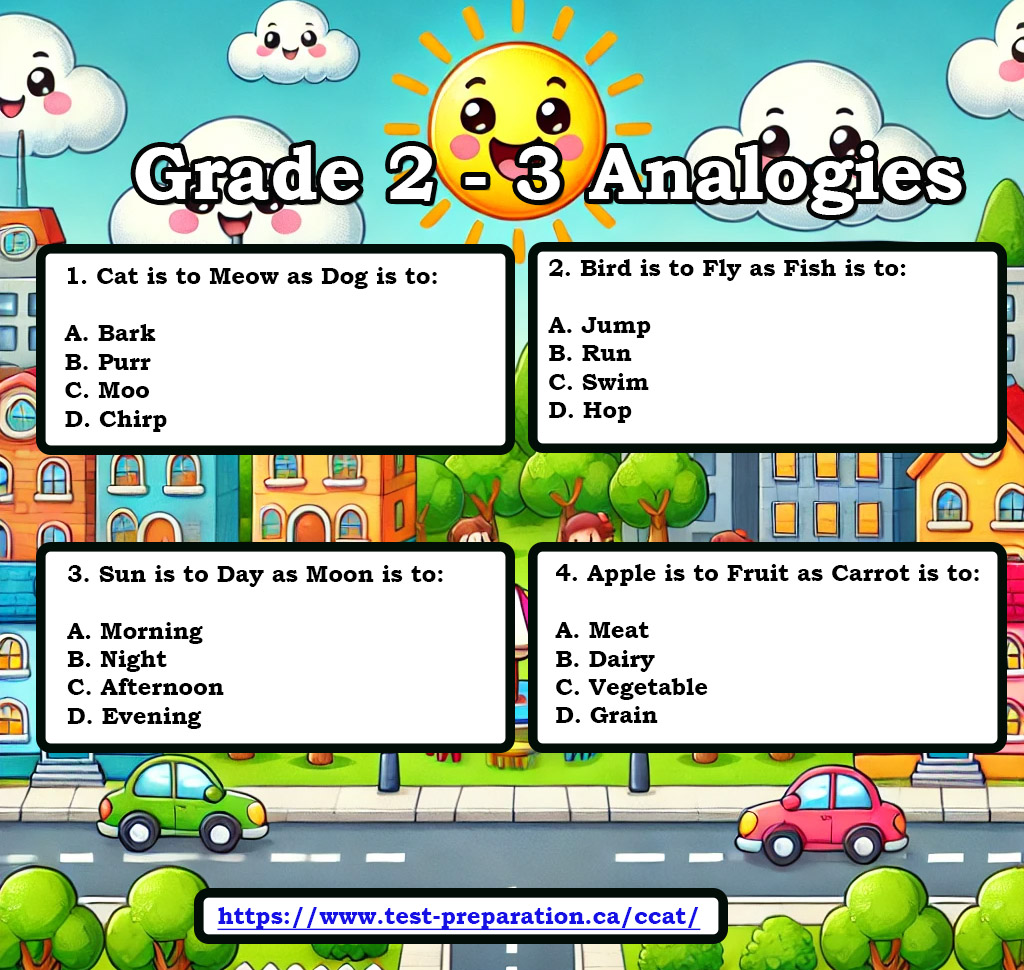
Verbal Analogies Practice
Grades 2 & 3
Picture Analogies
In this subsection, candidates will be presented with three pictures, with the first two carrying a particular relationship. The same relationship will be reflected on the third image. Candidates must determine the relationship, and apply it to the third picture, and select the matching image.
Nonverbal Battery
The non-verbal component of the Canadian Cognitive Abilities Test (CCAT) assesses a student’s reasoning and problem-solving abilities through questions that do not rely on language skills. These questions measure cognitive processes equitably because they are independent of language and cultural. Students are presented with visual stimuli like shapes, designs, and figures, and they must identify relationships, complete sequences, or solve puzzles.
This section includes questions such as pattern recognition, sequencing, spatial awareness, and abstract thinking as detailed below.
Figure Matrices
Here the candidates will be shown a set of shapes with a pattern or relationship. Test-takers are then given another shape with the same relationship as the first pair of shapes with an option in the multiple choices. Test-takers must determine the relationship by analyzing the first pair and select the option with the same relationship.
Figure classification
Students will be presented with a series of related shapes and must select the shape that does not belong.
Paper Folding
In this subsection, candidates will observe a square paper being folded several times. After folding the paper, the candidate will be required to think about how the paper would appear if it went through the folding steps. They will select an option that shows how the paper would appear.
Click here for CCAT Grade 2 Practice and Test Prep
CCAT Grade 2 Online Course — CCAT Grade 2 PDF Version — CCAT Grade 2 Paperback (Amazon)
Quantitative Battery
Number series
Number series
The number series section of the Quantitative Battery of the CCAT test assesses students’ ability to recognize number patterns and sequences. These questions are given a series of numbers and are required to determine which of the choices complete the series based on the pattern.
This section is designed to measure numerical reasoning and problem-solving skills, which are crucial for understanding and working with numbers.
Number Puzzles
The number puzzle questions give an equation with digits on either side of an equal sign, and one of the number missing. The task is then to select the correct number from the options to make the equation true
Number Analogies
The CCAT Quantitative Battery – Number Analogies section assesses your ability to understand numerical relationships and patterns. This section tests your quantitative reasoning skills, which are crucial for solving problems that involve numbers and mathematical concepts.
Example Questions
CCAT Grade 2 test tips
The best tip for any test is – Start early and Practice!
Encourage your child not to skip questions that seem hard. Many candidates fall for the temptation to skip questions that seem difficult. Let your child answer these questions with an answer that comes to mind. After finishing the rest of the questions, they can come back and see if they had a different answer in mind.
Train your child on proper use of the extra rough papers provided. Many schools allow candidates to use rough paper during the test. If your child finds a question challenging, let them break it down in steps to handle it better. They can also note down ideas that can help them solve questions that come later in the test.
Click here for CCAT Grade 2 Practice and Test Prep
CCAT Grade 2 Online Course — CCAT Grade 2 PDF Version — CCAT Grade 2 Paperback (Amazon)
Date Published: Wednesday, April 6th, 2022
Date Modified: Monday, March 10th, 2025

